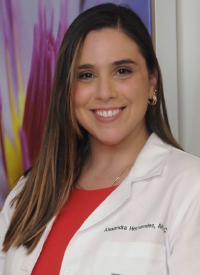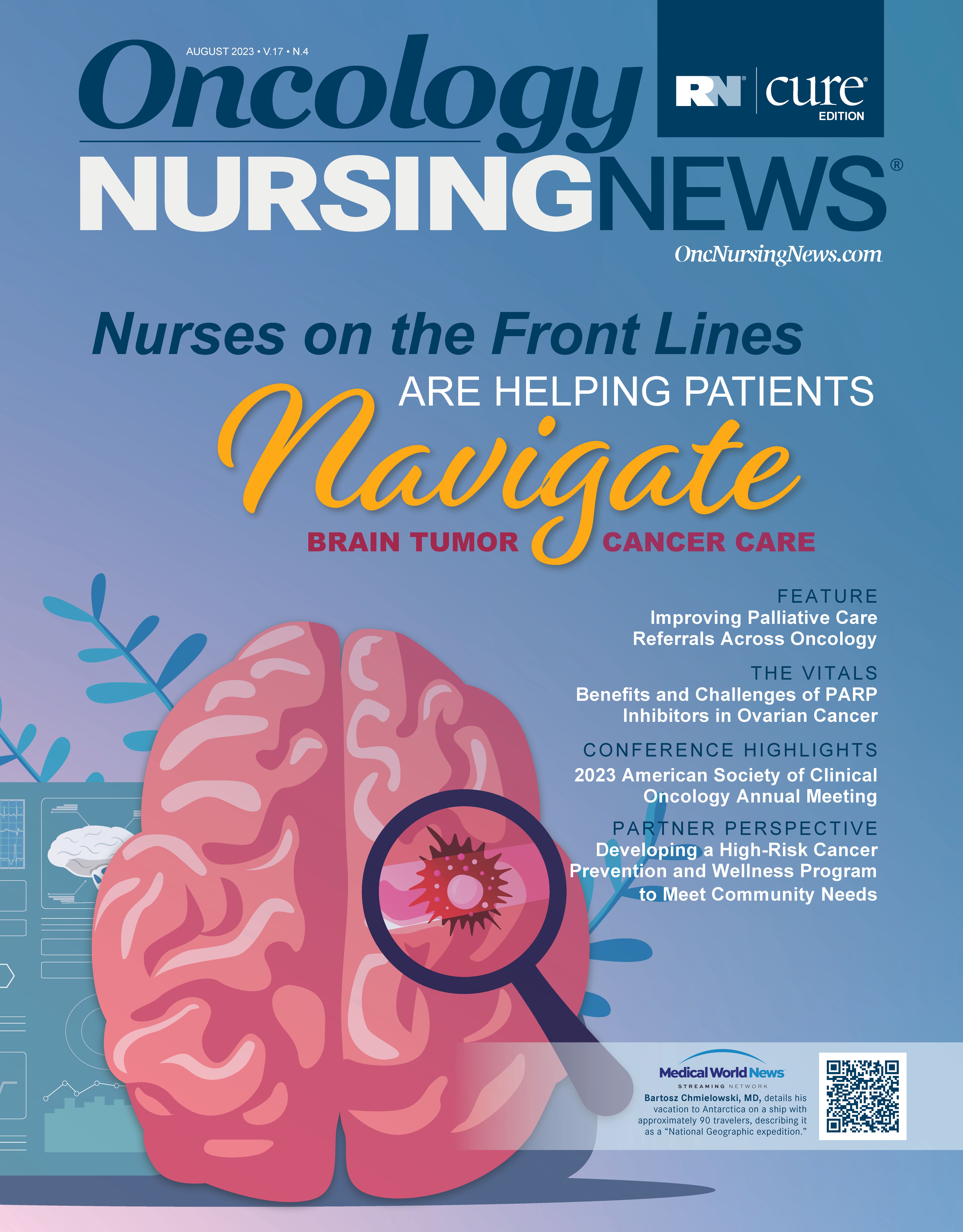Developing a High-Risk Cancer Prevention and Wellness Program to Meet Community Needs
The program’s initiative aims to identify those at increased risk for cancer through assessment and testing and then formulate a personalized evidence-based cancer surveillance or screening plan.
Alexandra M. Hernandez, MSN, APRN, FNP-C

According to the American Cancer Society, “In the United States, 1 in 2 men and 1 in 3 women will be diagnosed with cancer in their lifetime.”1 Most individuals will have a family member affected by cancer, if they do not receive a diagnosis themselves. Thus, there is an increased need within communities for individuals to have access to health care teams that will allow them to become proactive in their care. At the University of Miami-Sylvester Comprehensive Cancer Center in Florida, we believe that by helping patients understand their risk for cancer—including their possible inherited genetic risk— and focusing on their screening and prevention, we can help individuals become engaged in their health and wellness. To that end, in 2023, our institution launched a new program that focuses on high-risk prevention and wellness for individuals who may be at risk for developing cancer in their lifetime. The program’s initiative aims to identify those at increased risk for cancer through assessment and testing and then formulate a personalized evidence-based cancer surveillance or screening plan.
A patient’s genetic risk is evaluated through germline testing.2 The frequency of germline testing continues to increase throughout the oncology care continuum because of the development and expansion of testing guidelines. Because of the importance genetics have in cancer care, there is a great need for experienced genetic professionals to provide counseling and recommendations to patients and families. Before any germline testing, patients are evaluated by a genetic professional. Their personal medical history and comprehensive family history with a 3-generation pedigree are obtained, followed by pretest counseling for comprehensive education and planning. Traditionally, genetic risk assessments have been performed by licensed genetic counselors, but as the demand for genetic risk assessment increases, the limited supply of genetic counselors affords the opportunity for other professional support to be considered. The number of genetic counselors is not expected to stabilize until sometime between 2024 and 2026, according to a workforce study commissioned by the Genetic Counselor Workforce Working Group.2 To tackle the increased need for cancer risk assessment and genetic testing, the University of Miami Sylvester Comprehensive Cancer Center bridged the gap between genetic counselors and advanced practice registered nurses (APRNs) with genetic training and resource support. The training period includes visits with genetic counselors to ensure that APRNs understand how to compose a 3-generational pedigree. It is the details of the pedigree and personal medical history that, if not done accurately, can cause pertinent information to be left out when considering the type of genetic testing to be performed. If inaccurate, there would be an opportunity for genes relevant to family history to be missed in testing.
After genetic evaluation, if there is a possibility for an inherited risk of cancer, it is important to calculate the patient’s individualized risk, especially if their testing comes out negative. For example, per SEER (Surveillance, Epidemiology, and End Results) registry data, the general population risk for breast cancer in women is 12% to 13%.3 This data does not consider other risk factors. Risk factors for breast cancer include sex, age, inherited genetic change predisposing to cancer, family history of breast or ovarian cancer, personal history of breast cancer, racial/ethnic group, dense breast tissue, nonproliferative lesions of the breast, proliferative lesions of the breast with or without atypia or lobular or ductal carcinoma in situ, early menses (younger than 12 years), late menopause (older than 55 years), radiation therapy to the chest as an adolescent or young adult, history of hormone replacement therapy (HRT), and current or past exposure to estrogen or progesterone hormone agents.4 These factors are used to calculate a personalized risk assessment for breast cancer and to establish if there is an increased risk. If a patient is found to have increased risk, evidence-based recommendations for enhanced screening or chemoprevention are established as part of the patient’s plan of care. Different risk models can be implemented to assess a patient’s risk of developing breast cancer. Examples of commonly used risk models include the Gail model, the International Breast Cancer Intervention Study (IBIS)/ Tyrer-Cuzick (version 8) model, and the CanRisk Tool (The Breast and Ovarian Analysis of Disease Incidence and Carrier Estimation Algorithm [BOADICEA v5]).4 These risk models can help calculate 5-year risk (Gail model), 10-year risk (IBIS/Tyrer-Cuzick), or lifetime risk (IBIS/ Tyrer-Cuzick/Gail/CanRisk). If a patient’s 5-year risk is greater than or equal to 1.7%, a conversation about risk-reducing agents may be warranted, but per National Comprehensive Cancer Network guidelines, precautions should only be recommended when a patient has at least a 5-year risk of 3% per the Gail model or a 10-year risk of 5% according to the IBIS/Tyrer-Cuzick model.4 These risk models can also be used for consideration of enhanced screening if lifetime risk is greater than 20%. The enhanced screening recommendations for these individuals include clinical breast exams every 6 to 12 months instead of the annual recommendation, and annual screening mammogram with tomosynthesis and annual breast MRI, with both starting at age 40, or 10 years prior to the earliest breast cancer diagnosis (whichever is first) but not under age 30 with mammogram and not under age 25 with MRI.5 These personalized risk assessments are not limited to breast cancer but can also be implemented for other cancers such as colorectal, ovarian, and kidney cancers in conjunction with other risk models.6-11
Although a formal analysis of our institutional program has yet to be conducted, the early evidence has been promising. So far we have observed a decrease in genetic counselor wait times from 74 to 34 days. Additionally, our records indicate that, as a team, the licensed genetic counselors and high-risk APRNs have increased the number of patients who go through counseling. The patient volume increased from 496 patients with genetic counselors alone in 2022 to 807 with both genetic counselors and APRNs in 2023. Similarly, the total number of patient encounters increased from 643 in 2022 to 1199 in 2023, suggesting significant improvement to health care access. Through comprehensive personal and familial cancer history, genetic testing, cancer risk assessment, and implementation of cancer prevention plans, Sylvester’s High-Risk Prevention and Wellness Program is striving for proactive versus reactive care.
Alexandra M. Hernandez, MSN, APRN, FNP-C, is a nurse practitioner in the High-Risk Prevention and Wellness Program at the University of Miami-Sylvester Comprehensive Cancer Center in Florida.
References
1. All about cancer. American Cancer Society. Accessed June 22, 2023. https://bit.ly/3NLeO3o
2. Hoskovec JM, Bennett RL, Carey ME, et al. Projecting the supply and demand for certified genetic counselors: a workforce study. J Genet Couns. 2018;27(1):16-20. doi:10.1007/ s10897-017-0158-8
3. Cancer stat facts: female breast cancer. National Cancer Institute. Accessed July 7, 2023. https://bit.ly/44rnDq4
4. NCCN. Clinical Practice Guidelines in Oncology. Breast cancer risk reduction, version 1.2023. Accessed June 22, 2023. https://www.nccn.org/professionals/physician_gls/pdf/ breast_risk.pdf
5. NCCN. Clinical Practice Guidelines in Oncology. Breast cancer screening and diagnosis, version 1.2023. Accessed June 20, 2023. https://www.nccn.org/professionals/physician_ gls/pdf/breast-screening.pdf
6. Lee A, Yang X, Tyrer J, et al. Comprehensive epithelial tubo-ovarian cancer risk prediction model incorporating genetic and epidemiological risk factors. J Med Genet. 2022;59(7):632- 643. doi:10.1136/jmedgenet-2021-107904
7. Fitzgerald RC, Antoniou AC, Fruk L, Rosenfeld N. The future of early cancer detection. Nat Med. 2022;28(4):666-677. doi:10.1038/s41591-022-01746-x
8. McGeoch L, Saunders CL, Griffin SJ, et al. Risk prediction models for colorectal cancer incorporating common genetic variants: a systematic review. Cancer Epidemiol Biomarkers Prev. 2019;28(10):1580-1593. doi:10.1158/1055-9965.EPI-19-0059
9. Harrison H, Thompson RE, Lin Z, et al. Risk prediction models for kidney cancer: a systematic review. Eur Urol Focus. 2021;7(6):1380-1390. doi:10.1016/j.euf.2020.06.024
10. Tyrer J, Duffy SW, Cuzick J. A breast cancer prediction model incorporating familial and personal risk factors. Stat Med. 2004;23(7):1111-1130. doi:10.1002/sim.1668
11. Lee A, Mavaddat N, Wilcox AN, et al. BOADICEA: a comprehensive breast cancer risk prediction model incorporating genetic and nongenetic risk factors. Genet Med. 2019;21(8):1708-1718. doi:10.1038/s41436-018-0406-9



